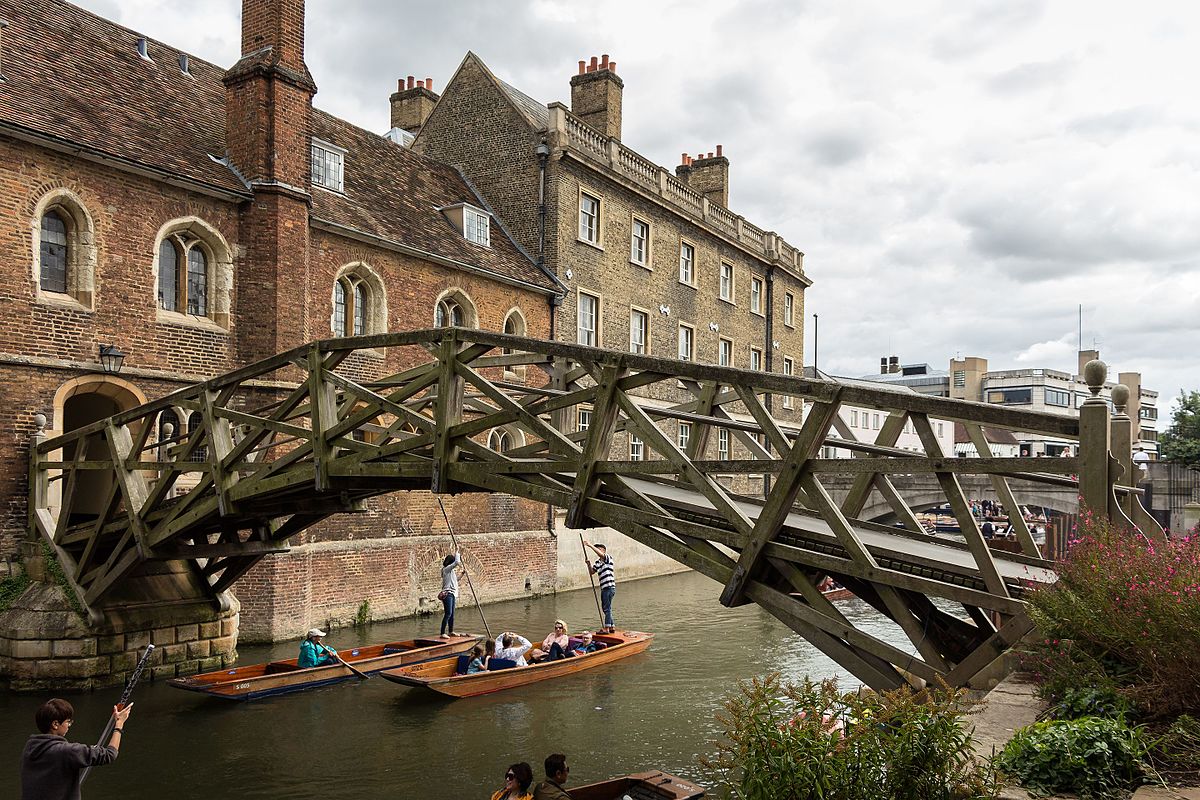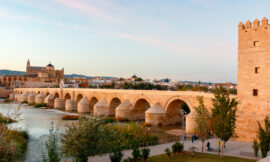The Mathematical Bridge, officially known as the Wooden Bridge, is an iconic structure located at Queens’ College, Cambridge. It spans the River Cam and is renowned for its unique design and the myths surrounding its construction.
Historical Background
Construction:
- Date: The bridge was originally built in 1749.
- Designer: It was designed by William Etheridge and constructed by James Essex. Contrary to popular myths, it was not designed by Sir Isaac Newton, as he died in 1727, well before the bridge was built.
- Purpose: The bridge was intended to connect the two parts of Queens’ College, which are situated on either side of the River Cam.
Rebuilds:
- Reconstruction: The bridge has been rebuilt several times, in 1866 and again in 1905, using the original design.
- Materials: It has always been made of wood, specifically teak, which is durable and resistant to weathering.
Architectural Features
Design:
- Engineering Marvel: The Mathematical Bridge is a classic example of a self-supporting structure. It uses a series of straight timbers arranged in a tangential pattern to create an arch.
- No Nails Myth: A popular myth suggests that the bridge was originally constructed without nails or bolts and held together by gravity and tension alone. However, this is not true; the bridge has always used metal fastenings.
Aesthetic and Practicality:
- Simplicity and Elegance: The bridge’s design is both simple and elegant, exemplifying the principles of engineering and aesthetics. Its apparent simplicity belies the sophisticated understanding of geometry and forces required to create such a structure.
- Functionality: The bridge serves as a pedestrian crossing, allowing students and visitors to move between the two parts of Queens’ College.
Myths and Legends
Isaac Newton:
- Common Myth: One of the most persistent myths is that the bridge was designed by Sir Isaac Newton without the use of any fasteners, relying solely on the principles of physics to hold it together.
- Debunked: This myth is false; the bridge was built 22 years after Newton’s death and has always used metal fastenings.
Self-Supporting Structure:
- Engineering Feat: While the bridge’s design is an engineering feat, it is not entirely self-supporting without fasteners. The use of bolts and nails is crucial to its structural integrity.
Cultural and Educational Significance
Symbol of Cambridge:
- Iconic Landmark: The Mathematical Bridge is one of the most photographed and iconic landmarks in Cambridge. It represents the blend of history, architecture, and academic excellence associated with the university.
- Educational Value: The bridge is often studied by engineering and architecture students as an example of innovative design and application of geometric principles.
Tourist Attraction:
- Visitor Appeal: The bridge attracts numerous tourists and visitors each year, who come to admire its design and take in the scenic views of the River Cam and the surrounding college buildings.
- Punting Tours: The bridge is a highlight on the popular punting tours of the River Cam, where guides share its history and myths with passengers.
Preservation and Maintenance
Upkeep:
- Regular Maintenance: Due to its wooden structure, the Mathematical Bridge requires regular maintenance to preserve its condition and ensure safety.
- Restoration Efforts: Periodic restorations have been undertaken to maintain its structural integrity and appearance, using traditional materials and techniques to remain faithful to the original design.
Modern Interventions:
- Structural Reinforcements: While preserving its historical and aesthetic aspects, modern engineering interventions ensure the bridge remains safe and functional for everyday use.
Conclusion
The Mathematical Bridge at Queens’ College, Cambridge, is a testament to the ingenuity and skill of 18th-century engineering. Its unique design, historical significance, and the myths that surround it contribute to its enduring allure. As both a functional structure and a symbol of Cambridge’s rich academic heritage, the Mathematical Bridge continues to captivate the imaginations of students, scholars, and visitors alike. Its preservation and maintenance ensure that it remains an integral part of the university’s landscape and a cherished historical landmark.



